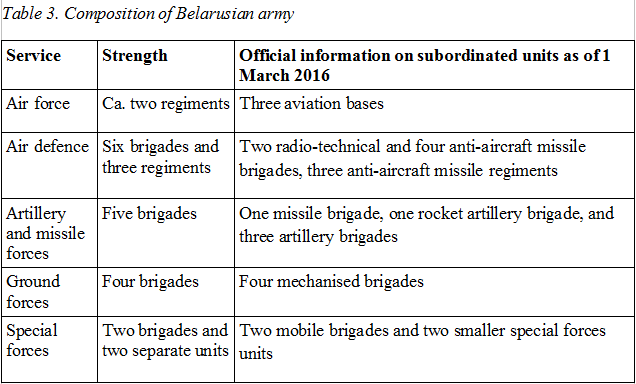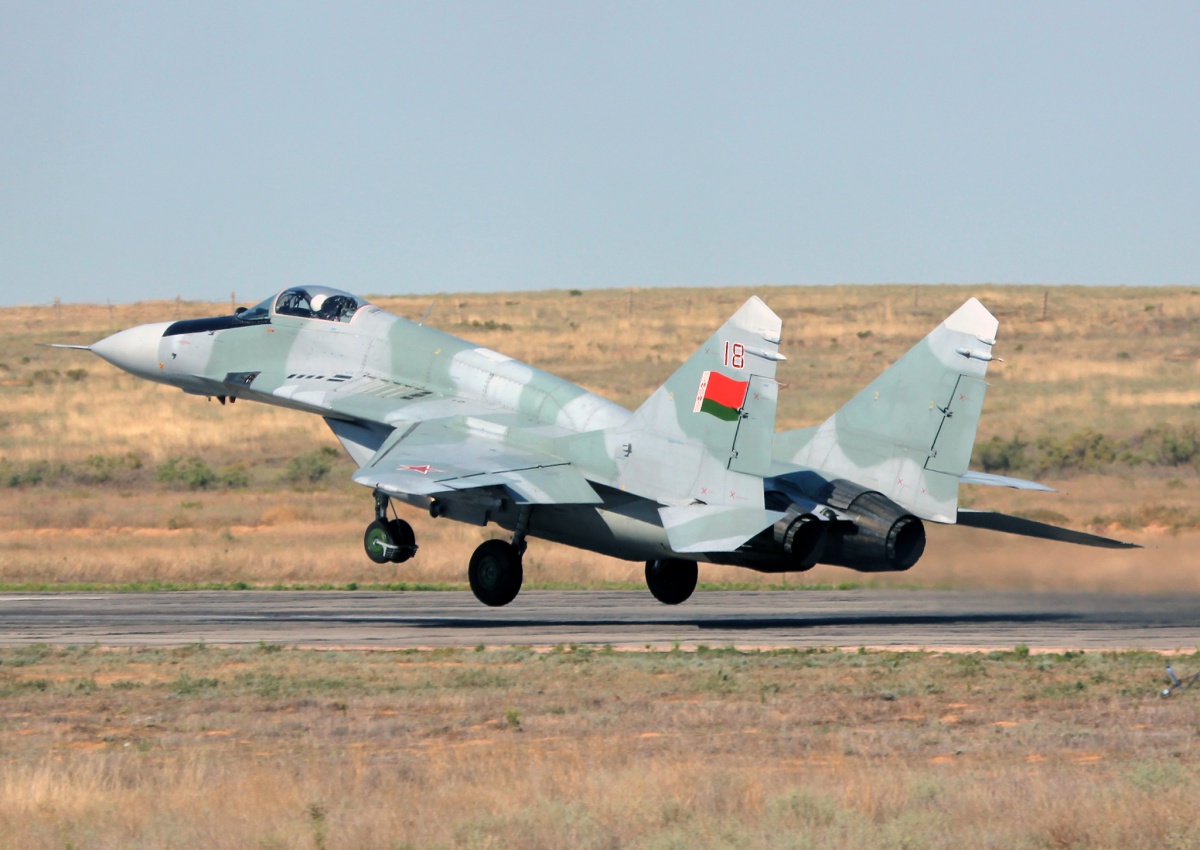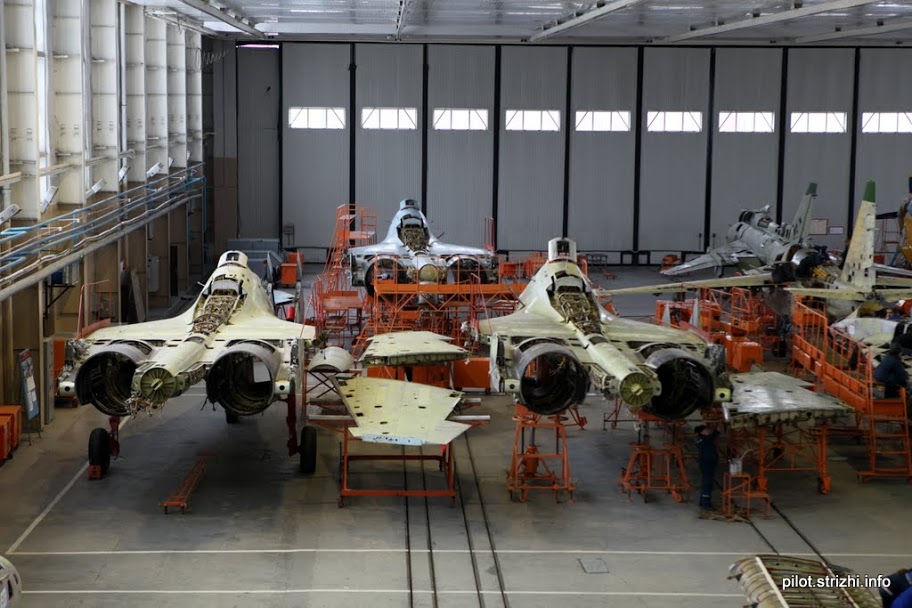Belarusian army aims to protect Russian airspace, not to atack other countries

Military parade on 3 July. Image: CTV.by
Belarus’s neighbours regularly voice their concerns about Minsk’s role in a potential Russian invasion of the Baltic states or Ukraine. However, on 15 June, Belarusian president Alexander Lukashenka insisted that although Belarusian and Russian troops were operating in the region ‘as one,’ they had no aggressive intentions.
Just a cursory glance at the Belarusian army raises doubts about its ability to engage in any large offensive operations. To make up for its diminishing national army capacities, the Belarusian government went as far as to bring the emergency ministry’s aviation to the 3 July Independence Day parade, along with equipment from the DOSAAF, a paramilitary sport association. In addition, the government invited a large number of Russian military aircraft and helicopters to airshows in Minsk and Mashulishchy, a town nearby.
Many types of equipment operated by the Belarusian army have become old and are being decommissioned without corresponding replacements. The army’s offensive capacities are especially affected by this deterioration. The government takes proper care of only two elements of the military: air defence and special operations forces.
Belarusian demilitarisation
The reality of the Belarusian military’s decline is becoming too evident for even government officials to deny. Writing on 12 May in the official army daily Belorusskaya Voennaya Gazeta, Aleh Voinau, head of international military cooperation department, and his deputy Valery Ravenka, complained that:
There is a gradual decline going on with regard to quantitative indicators of weapons and military equipment [deployed by the Belarusian army]. Alas, this is not true of the states of the so called ‘good-neighborhood belt’, which are carrying out large-scale modernisation and build-up of weapons and military equipment.
To make their point, they cited the figures of the Belarusian army’s troops and equipment for 2016 and 2017. The decline of military might, however, becomes more clear after one compares the numbers from recent years with even the early 2010s, as shows the table below:

Although official figures may be inaccurate, they more probably exaggerate the amount of equipment rather than the other way around. Besides, no cover-ups have been exposed so far, despite numerous inspection, visits, and survey flights of the Belarusian army by foreign military experts. In 2016 there were 28 such events. Russian aviation spotters also recently conducted an analysis of the Belarusian army’s attack helicopter fleet and drew similar conclusions about its dramatic decline.
Last but not least, the figures in the above table represent the army’s total number of weapons, including those kept in reserve, which may be effectively deficient. Belarusian defence minister Andrey Raukou revealed more realistic data regarding equipment in active service in a presentation for the national parliament on 4 April 2016 (see Table 2 below).
A purely defensive force?
The capacities of the Belarusian army have diminished in all regards. However, this has most affected its capacities for offensive operations. A brief overview of some basic components of offensive might, such as firepower and troop mobility capacities, shows that Minsk places virtually no value on these aspects of its military.

Belarus lacks the modern firepower necessary for any large military operation. Thus, in 2012 Minsk decommissioned its last Su-24 bombers, and its military officials openly deliberated possibly decommissioning the few remaining Su-25 close air support aircraft. Although they ostensibly meant for Yak-130 trainer jets to replace the Su-25s, thanks to the absence of independent media in the country such absurd statements went unchallenged.
As follows from the table above, Minsk also has few attack helicopters, which constitute another possible source of firepower on the battlefield. Moreover, it has no plans to replace them. On 22 May, a source from the Russian helicopter-manufacturing Vertolety Rossii Holding told TASS news agency that it had no contracts concluded with Minsk on attack helicopters.
Another crucial premise for offensive operations – troop mobility capacities – is victim to similar circumstances. Thus, Belarus has just two Il-76 operational transport aircraft. As a result, Russia had to send six of its own Il-76s to conduct the latest Belarus-Russian-Serbian military exercise including an airborne operation in Brest Province in Belarus.
Similar trends are visible with smaller equipment, which is also important for offensive operations. The media have reported stories from recent paratrooper exercises in Belarus which demonstrate this. When in early April Russian paratroopers came to Vitsebsk Province to participate in a joint exercise with their Belarusian counterparts, the Russians had to remember how to use old D-6 parachutes. The Russian army had long replaced them with newer systems such as D-10 and T-10V as early as in 2007. Meanwhile, in Belarus only older systems are available, so the Russian troops had to make do.
Thus, in anticipation of the next paratroopers exercise in early June, which were to be held with Belarusians and Serbs in Brest Province, Russians brought their own new D-10 parachutes, while the Belarusian and Serbian troops used older Soviet models.
Why is it so?
To put it briefly, Minsk has no money even for parachutes. This stinginess is logical: it does not crave the capacity to sent its paratroopers to seize NATO capitals. Official data about the structure of the Belarusian army shows that it has other priorities. The situation as of 2016 is presented in table 3, although the structure of the Belarusian army has remained almost unchanged for more than a decade, ever since Minsk shifted to a brigade-based structure for its national armed forces.

Minsk puts emphasis on two military components: air defence (with its air force ever more directed towards the needs of air defence and mobility of counterinsurgency forces rather than providing support to ground troop offensives) and special operations forces. This is a logical decision.
First, Belarus fosters air defence in order to sell its air space protection services to Russia. In exchange for this intangible and invaluable service, Minsk demands everything else – and above all economic benefits.
Secondly, the Belarusian leadership fears the security risks of Donbas-like scenarios of local insurgencies of whatever political colour or orientation, and it prepares for such emergencies. Top Belarusian officials regularly refer to Ukrainian problems. For example, Defence minister Andrei Raukou recently explained the reshuffling of the country’s national massive mobilisation system by citing ‘Ukraine’s experience’ of problems in mobilising the population for war in Eastern Ukraine.
The only two things which interest Minsk
All of Belarus’s military needs yield to two priorities: air defence and preparation for counterinsurgency operations. Thus, Minsk has invested serious money in designing the Palanez multiple-launch rocket system: it is a cheap way of providing fire support for counterinsurgency operations.
In sum, the Belarusian army itself has few resources for modern large-scale offensive operations, such as those conducted by the Russian army in 2008 in Georgia. It can hardly engage in such offensives even in tandem with the Russian army. Belarus keeps its military autonomy at a high level: it hosts neither Russian combat units, nor Russian forwards supply depots.
That is, even if Russia wants merely to send its own forces through Belarusian territory and fight relying only on its own troops, it has so far prepared nothing for that. Even more difficult for the Kremlin would be to integrate the Belarusian army, even as an auxiliary force to conduct a joint offensive operation.



 Thus, on 7 April 2017, Lukashenka characterised his talks with Vladimir Putin in St. Petersburg thus: 'I want Russia to help us with the rearmament of the Belarusian army.
Thus, on 7 April 2017, Lukashenka characterised his talks with Vladimir Putin in St. Petersburg thus: 'I want Russia to help us with the rearmament of the Belarusian army. At the same time, the purchase of only 12 Su-30SMs for Belarus's ageing air fleet does not solve the issue of Russia’s intention to establish an air base in Belarus. Belarus operates a fleet of 24 MiG-29s and 12 Su-25s, which the new aircraft are to replace.
At the same time, the purchase of only 12 Su-30SMs for Belarus's ageing air fleet does not solve the issue of Russia’s intention to establish an air base in Belarus. Belarus operates a fleet of 24 MiG-29s and 12 Su-25s, which the new aircraft are to replace.
